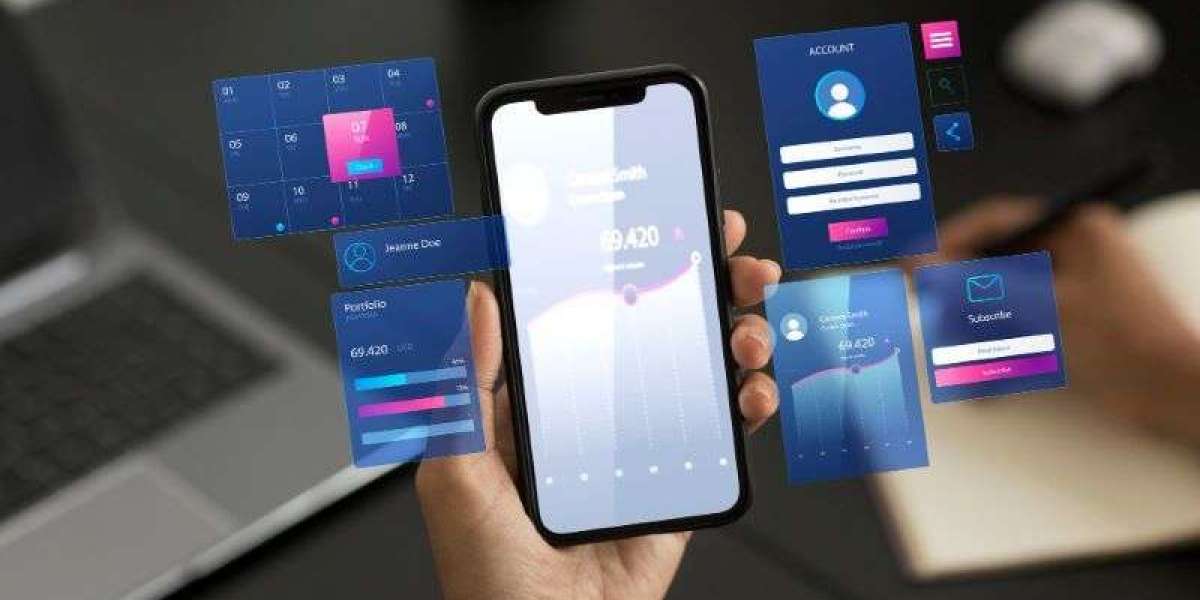In today’s digital age, mobile applications have become integral to our daily lives, offering convenience, connectivity, and enhanced functionality. For businesses aiming to engage users and boost their presence, understanding the mobile application development process is crucial. This guide will walk you through each stage of this intricate process, helping you unlock the full potential of mobile apps for your business.
Understanding the Mobile Application Development Process
The mobile application development process comprises several stages, each essential for creating a successful app. From the initial idea to the final launch, every step requires careful planning and execution. Below are the key phases that define the mobile application development process.
1. Ideation and Conceptualization
The first step in the mobile application development process is ideation. This stage involves brainstorming ideas, identifying the target audience, and determining the app’s core features. It's essential to conduct thorough market research to understand your competition and what users are looking for.
To create an app that stands out, consider the following:
- Identify a Problem: Focus on solving a specific problem or meeting a particular need for your users.
- Define Unique Selling Points (USPs): Clearly articulate what makes your app different from existing solutions.
- Create User Personas: Develop profiles for your ideal users to guide the design and functionality of the app.
2. Planning and Strategy
Once the idea is solidified, the next step is planning and strategy formulation. This stage lays the groundwork for the entire development process.
- Define Features and Functionality: Outline the primary and secondary features your app will offer. Prioritize these features based on user needs and technical feasibility.
- Choose the Right Platform: Decide whether to develop your app for iOS, Android, or both. Each platform has its own development requirements and audience.
- Create a Development Timeline: Establish a timeline for each phase of the project to keep the development team on track.
3. Design
The design phase is where your app starts to take shape visually. An intuitive and appealing design is crucial for user engagement.
- Wireframing: Begin with wireframes to outline the app’s layout and user flow. This serves as a blueprint for the development team.
- User Interface (UI) Design: Focus on creating visually appealing and user-friendly interfaces. Consider using consistent colors, fonts, and graphics that align with your brand.
- User Experience (UX) Design: Ensure that the app is easy to navigate. Conduct usability tests to gather feedback and make necessary adjustments.
4. Development
The development phase is where coding takes place. This stage can be divided into two parts: front-end and back-end development.
- Front-End Development: This involves building the part of the app that users interact with. It includes all the visual elements and user interactions.
- Back-End Development: The back end is responsible for data storage, server-side logic, and integration with third-party services. It ensures that the app runs smoothly and securely.
Choosing the right technology stack is vital during this phase. Depending on your app’s requirements, you may opt for native, hybrid, or cross-platform development.
5. Testing
Quality assurance is a critical component of the mobile application development process. Testing ensures that your app functions correctly and provides a seamless experience for users.
- Functional Testing: Check all features to ensure they work as intended.
- Performance Testing: Assess the app’s performance under various conditions, including different network speeds and device capabilities.
- Usability Testing: Gather feedback from real users to identify any pain points and areas for improvement.
- Security Testing: Ensure that your app is secure and user data is protected.
6. Deployment
Once the app has been thoroughly tested, it’s time to launch it. This stage involves submitting the app to the relevant app stores (Google Play Store for Android and Apple App Store for iOS).
- App Store Optimization (ASO): Optimize your app’s listing with relevant keywords, engaging descriptions, and eye-catching visuals to improve visibility in the app stores.
- Marketing Strategy: Develop a marketing plan to promote your app. This can include social media campaigns, influencer partnerships, and paid advertising.
7. Post-Launch Support and Maintenance
The launch is just the beginning. Ongoing support and maintenance are essential to keep your app relevant and functional.
- User Feedback: Monitor user reviews and feedback to identify areas for improvement and new feature requests.
- Regular Updates: Keep your app updated with the latest features, security patches, and improvements.
- Analytics Tracking: Use analytics tools to track user engagement, retention rates, and other key metrics to inform future updates and marketing strategies.
Key Considerations for Successful Mobile Application Development
To maximize the success of your mobile application development process, consider the following:
- Budgeting: Establish a clear budget that accounts for all stages of development, including design, testing, and marketing.
- Choosing the Right Team: Whether you’re hiring in-house developers or outsourcing, ensure that your team has the expertise and experience necessary to deliver a high-quality app.
- Focus on User Experience: A great user experience can set your app apart. Always prioritize user needs and feedback throughout the development process.
Conclusion
The mobile application development process is complex but rewarding. By understanding and navigating each phase, businesses can create applications that not only meet user needs but also drive engagement and success. Whether you're looking to build a brand-new app or improve an existing one, this guide provides a solid foundation for your mobile development journey.
For more interesting blogs click here.








